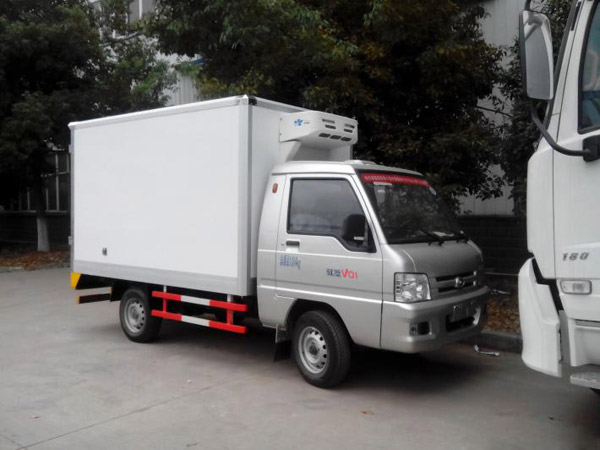The main purpose of installing ventilating troughs in refrigerated trucks is to facilitate the flow of cold air into the heat-insulated compartments, and to better ensure a balanced set of temperature in the insulated compartments. This is an optional equipment for refrigerated trucks and is generally large-scale refrigerated. The size of the car's car will be relatively large and long, so ventilators are usually installed. Or some customers with special needs may also need to install ventilation slots. For example, according to the national GSP certification requirements for drugs, the refrigerated vehicles that transport drugs must have a ventilation slot. The ventilation slots of vehicles are generally installed on the other four walls or on the bottom. Generally, the tops of the cars are not installed, and they are all fixed by rivets or fixed by welding. Way to install. The ventilation slots are made of stainless steel or aluminum alloy.  1. The maximum number of T-slots for refrigerated trucks can be installed on five sides. The use of its groove design can guarantee the smooth air-conditioning in the refrigerated car's thermal insulation box, better guarantee the refrigeration of the transported goods, and ensure the equalization of the temperature in the carriage, and the device can be equipped with ventilation slots in the compartment. If you are full, you will not worry about the lack of air conditioning.  2. The installation of ventilation slots not only increases the cold air circulation effect of the refrigerant, but also makes it possible to prevent the transportation cargo from adhering to the outside of the car floor and the side wall of the car body. Another name for ventilating troughs is also known as gutters. When transporting articles with heavier moisture contents, such as fresh meat, the ventilating trough can also be used as a sink, which can lower the water in the cargo. Stored and discharged to protect the car from contamination.  3. In addition to the ventilation effect of the refrigerated vehicle , it can also be used as an isolation rail, which can ensure that the transported items do not directly contact the wall, and can effectively protect the good and prevent moisture. Pollution and quality problems. In the country’s requirements for the transportation of pharmaceutical refrigerated trucks, it is also a rigid requirement that the drugs transported cannot reach the car wall. The reasonable height of the ventilating tank is 5cm distance.
A Solenoid Valve is an electromechanically operated valve. The valve is controlled by an electric current through a solenoid: in the case of a two-port valve the flow is switched on or off; in the case of a three-port valve, the outflow is switched between the two outlet ports. Multiple solenoid valves can be placed together on a manifold.
Solenoid valves are the most frequently used control elements in fluidics. Their tasks are to shut off, release, dose, distribute or mix fluids. They are found in many application areas. Solenoids offer fast and safe switching, high reliability, long service life, good medium compatibility of the materials used, low control power and compact design.
Besides the plunger-type actuator which is used most frequently, pivoted-armature actuators and rocker actuators are also used.
Solenoid valve designs have many variations and challenges.
Common components of a solenoid valve:
The core or plunger is the magnetic component that moves when the solenoid is energized. The core is coaxial with the solenoid. The core's movement will make or break the seals that control the movement of the fluid. When the coil is not energized, springs will hold the core in its normal position.
The plugnut is also coaxial.
The core tube contains and guides the core. It also retains the plugnut and may seal the fluid. To optimize the movement of the core, the core tube needs to be nonmagnetic. If the core tube were magnetic, then it would offer a shunt path for the field lines. In some designs, the core tube is an enclosed metal shell produced by deep drawing. Such a design simplifies the sealing problems because the fluid cannot escape from the enclosure, but the design also increases the magnetic path resistance because the magnetic path must traverse the thickness of the core tube twice: once near the plugnut and once near the core. In some other designs, the core tube is not closed but rather an open tube that slips over one end of the plugnut. To retain the plugnut, the tube might be crimped to the plugnut. An O-ring seal between the tube and the plugnut will prevent the fluid from escaping.
The solenoid coil consists of many turns of copper wire that surround the core tube and induce the movement of the core. The coil is often encapsulated in epoxy. The coil also has an iron frame that provides a low magnetic path resistance.
Solenoid Valve Electromagnetic Valve, Pneumatic Component, Pneumatic Solenoid Valve, Air Compressor Valve,Solenoid Valve Timer NINGBO BRANDO HARDWARE CO.,LTD , https://www.brandopneumatic.com
